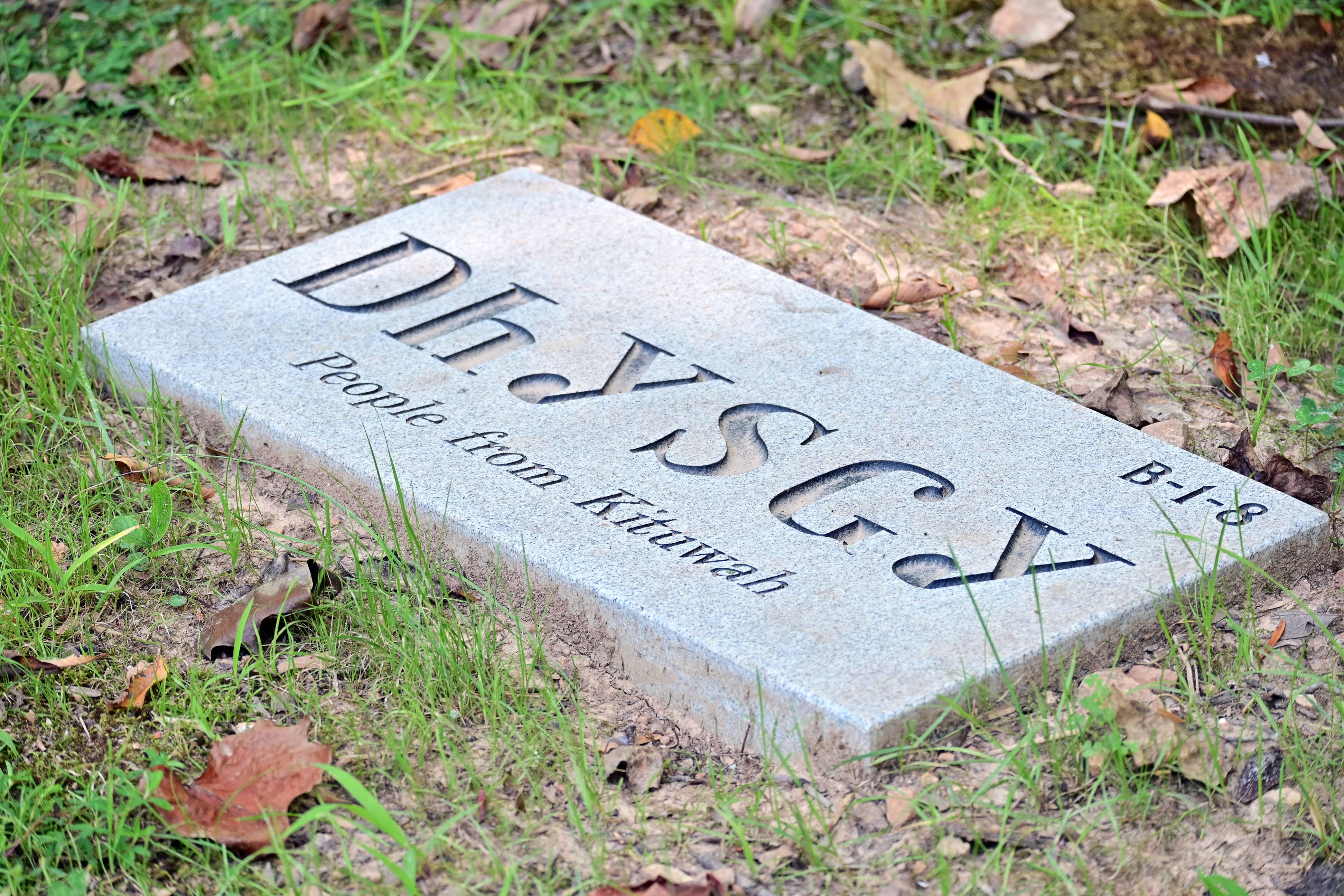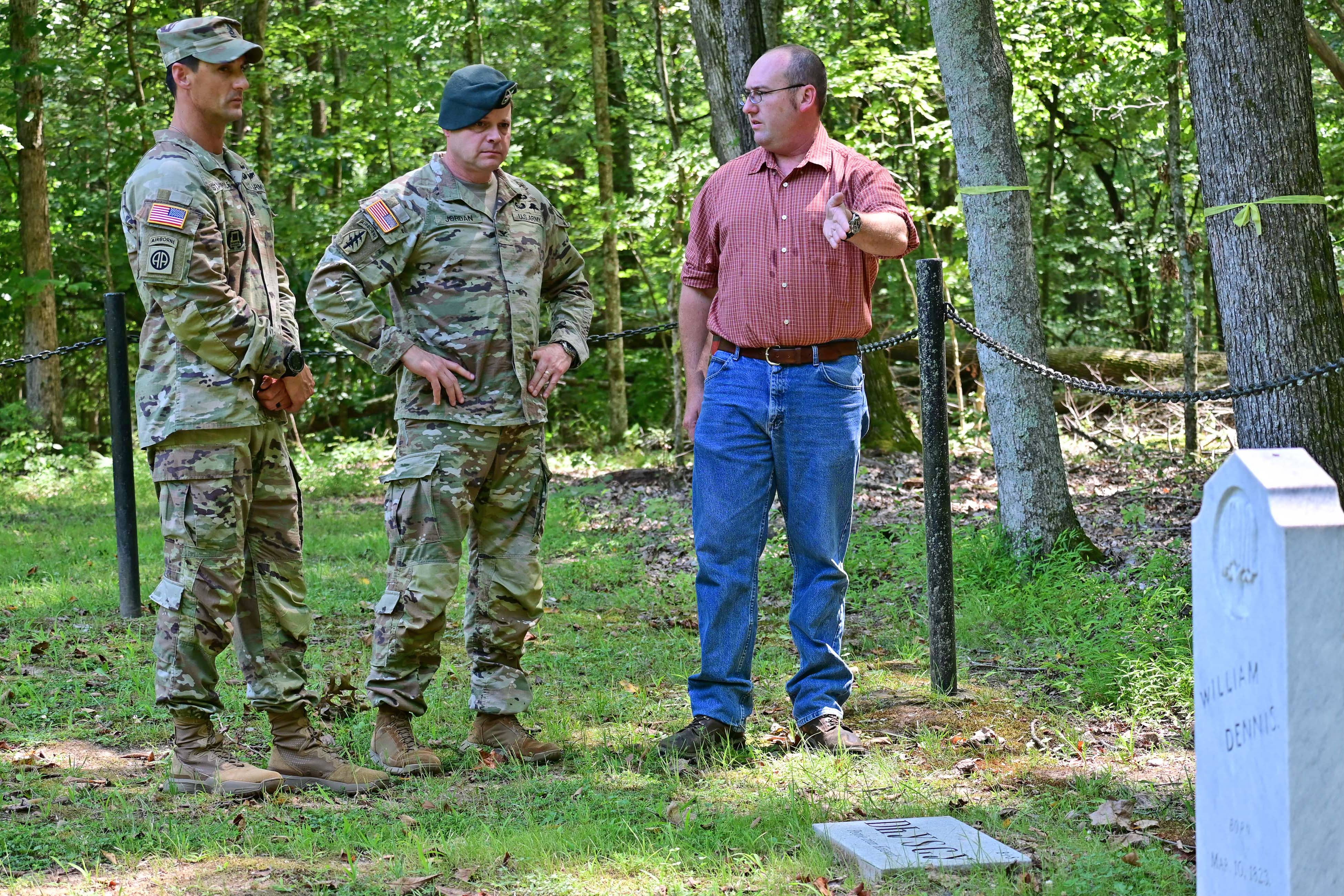
A special marker was recently placed on the gravesite of more than 50 partial Native American remains at Fort Campbell’s German POW Cemetery following a collaboration between Fort Campbell and the Eastern Band of Cherokee Indians Tribal Historic Preservation Office.
Archaeologist Ron Grayson, the cultural resources program manager with the Fort Campbell Directorate of Public Works, said many archaeological findings of human remains were stored, curated, or displayed with the objects that were found on the off chance someone would want to research them.
The 1990 Native American Graves Protection and Repatriation Act that was passed by Congress said all human remains, must at all times be treated with dignity and respect.
Previous curators of the Fort Campbell Pratt Museum discovered 57 individuals and 516 associated funerary objects between 1930 and 2001. The archaeological collections had been excavated on and off-post. All the remains were stored at the University of Kentucky until 2017 when they were transferred to the Cultural Resource Office at Fort Campbell.
Four of the remains were repatriated at the Land Between the Lakes National Recreation Area with coordination through the United States Forest Service.
Fort Campbell, in consultation with 12 Federally Recognized Native American Tribes, determined that there was not enough evidence to support cultural affiliation with any Indian Tribe. Since there were no culturally affiliated tribes, the remains were given to the tribes whose aboriginal land the collections came from. In this case, it was the Cherokee Tribes. Fort Campbell notified all the tribes that were identified as Cherokee of the unclaimed remains and the Historic Preservation Office formally claimed them on behalf of all three Federally recognized Cherokee Tribes.
Grayson said the symbolic marker and repatriation of Cherokee remains at the Fort Campbell German POW Cemetery serves as a powerful testament to the enduring legacy of Cherokee military members and their deep connection to the land they defended. The repatriation process, which started in 2017, not only honors the ancestral ties of these Cherokee individuals but also acknowledges the resilience and cultural heritage of Native American service members.
According to Grayson, the headstone likely represents the first, and only, marker with an indigenous script in an Army cemetery.
Fort Campbell has 131 known historic period cemeteries with over 1200 individuals buried here. The earliest marked grave dates to 1821. Interments continued up until 1941 when Fort Campbell acquired the land.







